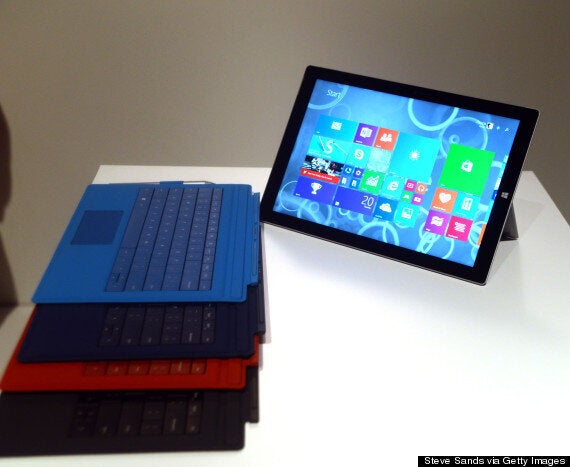Of all the most coveted gadgets of 2015, the tablet that turns magically into a laptop is near the top of most people’s must-have lists.
If you weren’t one of the lucky ones to find a hybrid like the Surface Pro 3 in your stockings over Christmas, a few more weeks of patience won’t hurt. After all, the industry has been waiting for this for almost 50 years now!
The first prototype of the tablet was all the way back in 1968, the Dynabook, complete with touchscreen, remote access and an in-built pipe dream – the product never saw the light of day because, well, it was 1968. None of the necessary technology had been invented yet…

Incidentally, 1968 was also the year the NewsPad was unveiled, Arthur C Clarke’s portable handheld creation in Stanley Kubrick’s 2001: A Space Odyssey, the first in a long line of science fiction movies to embrace the idea of the tablet.
The stuff of fantasies became a reality in 1982 with the GRiD Compass 1101 – arguably the first laptop of consumer significance – followed by the more popular GRiDPad in 1989. A portable PC-XT complete with monochrome touchscreen CGA display, a system memory that could extend to 20 MB and even a swish capacitance-based pen. It’s widely accepted that the pre-millennium favourites, the Newton MessagePad (1993) and the PalmPilot (1996), owe their existence to the GriDPad.
The pen-point operating system started to get perfected with the hand-held pen-only personal digital assistant EO-440 Personal Communicator in 1993, the world’s first phablet (phone and tablet in one). Sadly, with even the most basic version costing over £1500, the EO-440 failed to catch on (or the term ‘phablet’, which has become a buzzword only recently). But it did introduce many a vital component of later tablets, not least the 1.3-inch micro-drive, the smallest hard drive ever made until that point.
In the same year, IBM released the ThinkPad, complete with video controller, monochrome STN display with 640x480 resolution, 60MB HDD and electromagnetic pen. Crucially, for the evolution of the hybrid tablets of today, a keyboard could be connected to the system unit.
The tablet got its first colour makeover in 1998 with the Fujitsu Stylistic 2300, a pen-based touchscreen tablet with glare reducing transflective display, that failed to make its mark no doubt because of the hefty price tag at over £3,000!
Microsoft began its mission to turn the tablets, so to speak, in 2000, with the introduction of the Pocket PC, followed two years later by the Microsoft Smart Display, affectionately known as Mira, notable for its touchscreen LCD monitor and ability to connect to a PC via WiFi. The stylus-based Windows XP Tablet PC was also released in 2002, of which Bill Gates said of at the time:
“The Tablet PC is a great example of how computers are adapting to how people really work, whether they’re taking notes in a meeting, collaborating wirelessly with colleagues or reading on screen. We’re just scratching the surface of what is possible.”
Microsoft literally built on that surface, via HP Windows 7 Slate in 2010 (the year when tablets officially started to become every tech head’s best friend, culminating in the creation of the Surface Pro 3.
Experts have predicted tablets will outsell laptops in the New Year. Not surprising. With the tablet of 2015 featuring tools as exciting as 3D cameras, item recognition software, more screen space for enjoying movies and gaming, and tactile comfort of design to name a few, (not to mention being Windows 10 compatible), means the next-generation tablets can measure up to the laptop in every way.
Keyboard, of course, comes as extra…